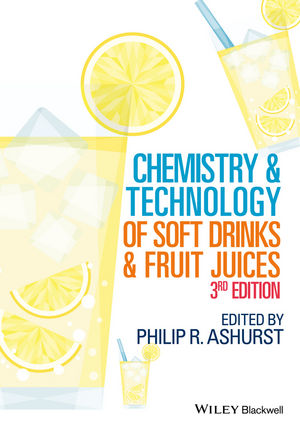
Slowing growth and lower price points have emerged in an energy drinks category once defined by a meteoric rise and premium pricing, but industry analysts and beverage manufacturers say it is unclear whether the recession or category maturation are to blame.
The total energy drink category grew by 3.1 percent in U.S. supermarkets, drug stores, gas and convenience stores, and mass merchandise retailers, excluding Wal-Mart, during the 52 weeks ending June 13, 2010, according to SymphonyIRI Group, Chicago.
“It’s a little problematic because the two are happening at the same time,” says Richard Haffner, industry manager at Euromonitor International, Chicago. “The category is slowing down, and the recession happened. I’d say from a strictly numerical perspective, it’s hard to tease that apart.”
As category growth slows, so has the introduction of new products. In 2008, 375 new energy drinks were released in the United States, according to Chicago-based Mintel International’s Global New Products Database. In 2009, new energy drink introductions fell by 64.3 percent to 134 in the United States.
But Mintel still expects the category to grow by 53 percent in current prices from 2010 to 2015, according to the company’s “July 2010 Energy Drinks and Energy Shots” report. From 2005 to 2010, energy drink sales increased by 106 percent in current prices, Mintel reports.
The category has seen price points fall though, and private label and niche brands have emerged in the category as well, Haffner says.
“I think [falling prices] has to do with the category maturing more so than being recession related because growth in the category has been slowing down for the last several years,” he says. “… These are high-margin products, and, given the growth in the category, private label has started to enter.”
Sales of private label energy drinks were $12.9 million in measured channels during the time period, SymphonyIRI data show, and the average price of energy drinks fell slightly to $2.54. Taking advantage of this trend, earlier this year value-priced grocer Aldi, Batavia, Ill., released Gridlock, a 16-ounce energy drink that retails for $0.89.
The combination of an economic downturn and aggressive pricing, promotion and marketing strategies by beverage companies in other categories, such as carbonated soft drinks, has been a recipe for slowing growth for energy drinks, says Tom Mahlke, president of Crunk Energy Drinks, Roswell, Ga.
“It’s just impossible to continue to have those growth rates for longer periods of time,” he says. “It’s just a natural slowdown in the category.”
The high price of energy drinks is the biggest barrier to energy drink companies growing their consumer base, Mintel reports. Nearly half of consumers who do not drink energy drinks or shots believe the beverages are too expensive, according to Mintel.
For price-conscious consumers, energy drink mixes have emerged as a value alternative to ready-to-drink energy beverages. “Energy drink mixes offered a cheaper alternative to non-aseptic energy drinks, which consumers welcomed during the recession,” according to Mintel. “Exciting new product innovations could also mean big gains in the coming years in this segment.”
Energy drink mix sales account for less than half a percent of the total energy category, but sales rose by 15.8 percent in the time period, according to SymphonyIRI data.
The big three
Despite fighting a recession and maturation that have resulted in more consumers seeking value, the top three energy drink brands, which have average prices between $2.35 and $3.04, still account for a majority of the category.
The overall category still is dominated by its largest brands: Red Bull, Monster Energy and Rockstar. All told, those three brands account for more than 64 percent of the energy drink category’s $5.4 billion in sales, according to SymphonyIRI.
Red Bull, which accounts for 38.3 percent of the category’s sales, rebounded from the previous year by growing sales 7.8 percent to $2.1 billion for the year ending June 13, SymphonyIRI reports.
“In 2009, the category was flat versus prior year, due to decline in foot traffic in the convenience channel, the heartland of the energy category, as well as a decline in discretionary spending in the grocery channel,” Red Bull says. “2010 has seen the category return to growth, and the trend is improving too.”
A major trend in the category has been the proliferation of package sizes, Haffner says, including larger pack sizes and multipacks. In April, Red Bull launched its largest package to date, a 19.2-ounce Red Bull Racing Team Special Edition can that retails for $4.49 per unit. The can will be available throughout the NASCAR season. The company now offers its product in 8.4-, 12-, 16- and 19.2-ounce cans.
“Red Bull has recognized the value in the energy category of offering a variety of conveniently sized packages at the shelf, offering the optimal range of energy boosts to consumers,” the company says.
According to Mintel, Red Bull has lost users to Monster and Rockstar, which have used value pricing and partnerships with Coca-Cola and PepsiCo, respectively, to improve marketing and distribution.
Since its inception, Monster Energy drinks have been marketed in larger packages. Aided by a distribution partnership inked last year with The Coca-Cola Co., Atlanta, Hansen Natural Corp.’s flagship Monster Energy drink had the largest growth among the top three energy drinks during the time period, as sales increased by 12.4 percent, topping $1 billion, SymphonyIRI reports.
Monster energy drinks account for four of the top 10 selling brands, but only the company’s flagship brand achieved significant growth. Java Monster and Monster Energy XXL saw sales slide by 7.3 and 56.1 percent, respectively. Monster Mega Energy, a new product introduced last year, achieved $129.9 million in sales, according to SymphonyIRI data.
Last year, Rockstar began a distribution partnership with PepsiCo, Purchase, N.Y. But sales of Rockstar energy drink, despite holding the third largest dollar share of the market, declined for the second consecutive year. Sales of Rockstar energy drink dipped 1 percent to $392.9 million during the time period, SymphonyIRI data show.
Finding a niche
For some smaller beverage companies, appealing to a more diverse demographic has been important to weather the recession. Energy drinks primarily have been marketed to teenagers and young adult males, but some beverage companies are looking to other markets.
According to Mintel research, seven out of 10 respondents are not active in the energy drink category and are not interested in entering it, suggesting that energy drink manufacturers need to develop products for a wider range of consumers, the research firm says.
“We have taken steps to market our beverages to the ‘soccer mom’ segment of the population, as well,” says Jeffrey Cheatham, corporate communications director for Wave Energy, Cornelius, N.C.
Cheatham says Wave has lower caffeine content and is working on a diet version of its drink that would be sweetened with stevia. “If the moms out there are going to purchase an energy drink for their teenagers, we want to be a choice that they feel comfortable with,” he says.
Crunk’s consumer base was built on the 13- to 24-year-old male demographic. Since its inception in 2006, the balance between male and female consumers has begun to level off in recent years, says Mike Fransz, Crunk’s director of marketing.
Fransz attributes the rise in female consumers to Crunk’s flavor options and variety, which include Pomegranate, Citrus, Grape Acai, Mango Peach and Sugar-Free.
One area of growth for the energy category has been beverages that fill a niche between energy and another category, such as energy drinks combined with 100 percent juice flavors, Haffner says.
PepsiCo released two energy juices through its Amp Energy brand. The juices, available in Orange and Mixed Berry varieties, contain a blend of juices fortified with caffeine, taurine and plant extracts to give it energy properties.
Ocean Spray offers Cran Energy juice drinks in three flavors: Cranberry, Cranberry Pomegranate and Cranberry Raspberry. The drinks are enhanced with natural caffeine from green tea extract and B vitamins, the company says.
Euromonitor’s Haffner says that focusing on more usage occasions, such as packaging with resealable lids, and international distribution would be likely to boost sales as well.
“For the new guys, it’s always tough when you’re late coming in, so they’ll search for the unique reason for being,” Haffner says. “But it’s going to be tough to catch those big guys.” BI


